The joint announcement on March 13, 2023, that the partnership between Australia, the United Kingdom, and the United States (AUKUS) has defined a path forward on Canberra acquiring conventionally armed, nuclear-powered submarines is a significant moment for the future of the Indo-Pacific region. Below, Brookings experts assess the implications of the AUKUS partnership on the United States and its allies, China, nuclear non-proliferation, and much more.
 Bruce Jones (@BruceBrookings)
Bruce Jones (@BruceBrookings)
Senior Fellow and Director, Project on International Order and Strategy
The September 2021 announcement of a deal between Australia, the United Kingdom, and the United States on nuclear-propelled submarine technology — and a raft of other sophisticated military technologies — was widely hailed as a “strategic masterstroke,” and welcomed by national security experts across the political spectrum. Two initial concerns have been put to rest: After a diplomatic furor over de-linking France from the project, Paris quickly allowed the issue to die down, and early proliferation concerns were largely assuaged by the International Atomic Energy Agency. Other questions raised at the time of the announcement included the potential knock-on effect on other allies’ interest in acquiring nuclear submarines, and the prospect of a fierce Chinese reaction — though of course a strong response by Beijing could be taken as an indicator of success. The deal has also already survived one change of government in Canberra and appears to enjoy widespread and bipartisan support.
The more serious operational questions remained: Who would build the new boats, where, on what model, at what cost, and with what implications for a submarine industrial base that, like most of the wider naval shipbuilding base, had withered since the end of the Cold War? On the latter point, the heads of the Senate Armed Services Committee went so far as to express their serious reservations to the Biden administration in December 2022 that Australia’s acquisition of new submarines would derail America’s own fleet-expansion efforts — though they later publicly signaled their support for the effort.
Now, following intensive consultations, the trio has delivered a highly credible answer. It will play out in three phases.
The first will see: increased U.S. and U.K. submarine visits to Australian ports; Australian submariners embedded on U.S. and U.K. boats, as well as in their shipyards; a “proportional” Australian investment in U.S. submarine building infrastructure; increased U.S. funding for the same; and the start of a major Australian investment in the personnel and infrastructure the project will require over the long term.
The second phase will see the creation of Submarine Rotational Force West — a joint force consisting of U.S. and U.K. submarines operating out of Australian ports. By the early 2030s, Australia also plans to acquire between three and five Virginia-class submarines, built in the United States.
In parallel, Australia and the U.K., with substantial U.S. technological assistance, will begin work on what will eventually become Phase 3 — a jointly designed and mutually operated new nuclear-powered submarine, given the moniker SSN-AUKUS. The first of these boats will be built in the U.K., with an expected delivery date in the later 2030s, and then Australia is expected to deliver its own build in the early 2040s.
Two key elements of this can make it work. First, the large-scale initial upgrade in the submarine industrial base, through a combination of 2022 funding (at $2.3 billion) by the United States, new U.S. funding (in the 2023 budget), and the Australian investment. At present, the available funding for U.S. submarine builds outstrips the industrial capacity to build them. But the availability of substantial new funding and the long, predictable duration of the commitment should spur industry to expand the capacity to build these boats. Personnel is a slightly trickier question, but at the very least this deal will help retain expertise in the U.K.; whether Australia can identify and train enough people fast enough will be the acid test. Second, because the AUKUS deal builds on a very advanced intelligence-sharing partnership (these are three of the most active members of the Five Eyes intelligence-sharing group) and involves a wide range of high-technology cooperation, the net upgrade to all three countries’ military-industrial and technology bases should create both compounding effects and political/economic dividends that can help sustain the partnership.
There are difficulties and sensitivities ahead, to be sure. Australian critics have questioned whether their country is ceding too much sovereignty if what will become their most powerful military tool is deeply embedded in an alliance structure. Americans have raised concerns about the intelligence-sharing risk and will eventually wonder whether having the U.K. and Australia embedded in their own submarine operations might limit U.S. freedom of maneuver. But the United States has worked through such issues in a NATO context, and Australia has long proved to be America’s most reliable fighting ally: Neither the intelligence sharing nor sovereignty concerns seem anywhere close to insurmountable.
Would that it could all happen more quickly. China is sprinting to improve both the scale and quality of its ever-larger navy. Maintaining the United States’ current generational lead in submarines is going to require its own sprint. Keeping up and indeed expanding America’s own investment in the next-generation Columbia-class ballistic missile submarine — and even more so in the new “SSN-X” fast attack submarine — is at least as important as AUKUS. AUKUS is more of a marathon, though getting to the successful completion of Phase 2 will feel a lot like a sprint. Both matter. In the shorter term, the technology payoffs of advanced collaboration with the U.K. and Australia, and the benefits of parallel design with the SSN-AUKUS, could speed the path to successful completion of the SSN-X program. And China’s expanded navy isn’t going away: We need increased naval and especially submarine capacity for the long haul.
Even while a major land war in Europe attracts much of our attention, the biggest single fact of geopolitics is that the two largest powers in the world are divided by 7,000 miles of ocean, over which both will contest. Dealing with China’s burgeoning capacity in this space is going to require new alliance structures that can bring technological and naval capacity to bear. Together with the Quad, and new developments in Japan, AUKUS is a major step in that direction.
 Michael E. O’Hanlon (@MichaelEOHanlon)
Michael E. O’Hanlon (@MichaelEOHanlon)
Senior Fellow and Director, Strobe Talbott Center for Security, Strategy, and Technology
As some of the most survivable, lethal, and otherwise useful modern naval capabilities, submarines’ relevance to a strategic rivalry with China in the Indo-Pacific region is hard to exaggerate. The AUKUS deal’s specifics — most of all, its commitment to increase the overall amount of U.S. and allied submarine shipbuilding capability — make it a net win on these terms.
The initiative will only grow allied submarine capability by a bit more than 10%, if one counts the entire American submarine fleet in the equation. But that U.S. fleet is mostly focused on Atlantic and Middle Eastern operations — very little of it is based forward in the Western Pacific. Adjusting for these factors, AUKUS could effectively increase allied submarine capacity by 25%.
AUKUS is significant for two other reasons: signaling and technology sharing. Canberra, London, and Washington have not always been on the same page regarding China, and AUKUS will strengthen their strategic collaboration in pushing back against Beijing’s assertive behavior and aggression. Yet at the same time, the three countries may temper each other’s — and especially America’s — tendencies toward an overly confrontational China policy.
In addition, AUKUS promises greater technological collaboration by helping to relax export controls and other barriers. At first blush, this may seem only a modest measure, since the U.K. and Australia are established technological powerhouses and close U.S. allies. But many barriers to close technological sharing still exist. AUKUS can help tear them down, jump-starting cooperation in anti-submarine warfare technologies, quantum computing, advanced materials, advanced missiles, directed-energy weapons, missile defenses, and robotics (among other things). The resulting new procedures can then be extended to other allies too — as we show China and the world that it is difficult to defeat a coalition of like-minded democracies, despite all of the West’s political warts and occasional dysfunctionality.
 Ryan Hass (@ryanl_hass)
Ryan Hass (@ryanl_hass)
Senior Fellow, Center for East Asia Policy Studies and John L. Thornton China Center
The joint announcement of the path forward for AUKUS has the potential to significantly enhance deterrence for Taiwan contingencies. The announcement fuses together two of America’s asymmetric advantages in East Asia. The first is its unique undersea warfare capabilities. The second is America’s network of security alliances and partnerships.
The AUKUS announcement layers on top of several recent transformational events in the region. These include Japan’s generational upgrade of its defense posture, the Philippines’ decision to provide additional basing access to American forces, America’s progress in dispersing its force projection capabilities, and improving ties between Japan and the Republic of Korea. This latter breakthrough should unlock more U.S.-Japan-Republic of Korea trilateral defense and intelligence coordination.
These developments create new dilemmas for China and raise the risk of Beijing seeking to alter the status quo through threat or use of force. Nowhere is that risk more pronounced than in the Taiwan Strait, where Beijing’s unapologetic objective is to exercise control over Taiwan and its 23 million citizens.
Yet, as much as the AUKUS announcement and other recent events tilt the strategic landscape in Washington’s preferred direction, they will not diminish Beijing’s appetite for Taiwan. Particularly given the lead time required to bring AUKUS’ full capabilities to bear, it makes sense for the United States and its partners to maximize defensive preparations while minimizing direct provocation, accepting that, at times, these two imperatives will be in tension. Managing this tension will require statesmanship and vision above all else.
 Amy J. Nelson (@amyjnelsonphd)
Amy J. Nelson (@amyjnelsonphd)
David M. Rubenstein Fellow, Strobe Talbott Center for Security, Strategy, and Technology
By invoking the Nuclear Non-Proliferation Treaty (NPT) in its recent AUKUS announcement, the United States has cast AUKUS as a sign that the nuclear accord — and the grand bargain it contains — is alive and well.
Portraying access to U.S. nuclear submarine technology as a kind of reward for Australia’s good non-proliferation track record, the AUKUS partnership pays homage to the NPT’s promise of access to nuclear technology afforded to non-nuclear weapons states in exchange for their not pursuing nuclear weapons. The move is unprecedented in the contemporary era: The last time the United States shared nuclear submarine technology was with its ally the United Kingdom in the 1950s. Washington is now portraying AUKUS as the creation of a new kind of “nuclear stewardship” among the allies, where the term once referred to the safety and security of a state’s nuclear stockpile.
Signed in 1968, the NPT was originally designed to prevent more/additional states from accessing the highly enriched uranium that is required for pursuing nuclear weapons programs and, in this way, to constrain/contain nuclear proliferation. While Australia’s navy currently operates six diesel-electric submarines, the newer Virginia-class attack submarines being sold to Australia (and eventually the AUKUS-class submarine) are decidedly next-generation: They can stay underwater for longer periods of time as well as travel farther than conventional submarines before surfacing.
At issue — if not immediately so — is the transfer of fissile material and nuclear technology from a nuclear weapons state to a non-weapons state, ostensibly permitted by the NPT for non-military use. Though China would beg to differ; Beijing has said that the AUKUS pact is an explicit violation of the NPT. Still, other countries like Brazil and India disagree. All of this means this recent AUKUS announcement is either a reinterpretation of the NPT and access to nuclear technology for a new age, or a fundamental violation of an aging arms control infrastructure. Though not an explicit violation of the accord, whether the transfer is for truly “peaceful uses” is certainly subject to doubt. The entire AUKUS enterprise is meant to set an increasingly aggressive China on its heels. Beijing will likely respond in kind, using the transfer as fodder for its growing engagement with Russia.
 Tom Stefanick
Tom Stefanick
Visiting Fellow, Strobe Talbott Center for Security, Strategy, and Technology
With the new agreements for implementing the AUKUS deal, the Australian government will be procuring one of the most flexible, capable war machines ever created. During the last decade of the Cold War, U.S. attack submarines had a primary mission of threatening the Soviet Union’s strategic missile submarines in their home waters. Today, China appears to be operating its own missile submarines in the South China Sea and elsewhere as part of its strategic deterrent force. Major powers worry about the survivability of their sea-based nuclear deterrent. The United States Navy, for example, has placed the construction of its new strategic submarines as its top priority and is making improvements to ensure that this nuclear deterrent force is never threatened.
In the 1980s, there was a lively public debate in the United States about the merits of threatening Soviet ballistic missile submarines. Australia should engage in a similar public discussion, since their attack submarines and crews may someday be operating in the same waters as Chinese strategic weapons.
Indeed, the United States will need to demonstrate the economic, military, and strategic value of stronger ties with Australia under AUKUS if the multi-decade project is to succeed over time. The people of Australia will be able to support AUKUS over the long term if they can see the tangible benefits of greater engagement with the United States and understand the returns on their investments in submarines — naval vessels which are, after all, designed never to be seen. AUKUS will be seen as a net economic gain for Australia if the United States can share the broadest array of technical expertise in addition to specialized shipbuilding.
 CONSTANZE STELZENMÜLLER (@ConStelz)
CONSTANZE STELZENMÜLLER (@ConStelz)
Senior Fellow and Director, Center on the United States and Europe and Fritz Stern Chair on Germany and trans-Atlantic Relations
AUKUS Day in London also saw the publication of the United Kingdom’s somewhat ponderously named “Integrated Review Refresh 2023.” It provides important and revelatory strategic context for the submarine alliance announcement by emphasizing the rise of a “new network of ‘Atlantic-Pacific’ partnerships, based on a shared view that the prosperity and security of the Euro-Atlantic and Indo-Pacific are inextricably linked.” This framing reflects the reality of a highly globalized European middle power.
This is entirely in line with thinking in much of the rest of Europe — and indeed in the European Union, which called upon its member states “to expand their presence and action” in the Indo-Pacific as a means to support their common security and prosperity in its own new EU maritime strategy (itself an update of a 2014 document).
The new U.K. strategy paper is also notable for its emphasis on the escalation risks of global strategic competition. In a strikingly dark passage, it warns of “systemic competition … above and below the threshold of armed conflict — over the military, economic, and political balance of power.” And it singles out China as an “epoch-defining and systemic challenge … across almost every aspect of national life and government policy.”
In other words, the U.K. is preparing for a future of permanent global friction generated by interdependence and competition (and possibly armed conflict).
This is not a challenge a middle power, however global in outlook, can survive on its own; hence the emphasis placed on alliances like AUKUS and powerful friends like the United States and Australia. Interestingly, however, the new British paper remedies the earlier document’s omission by extensively highlighting its “valued close cooperation” with European peers — and even with the European Union.
 Caitlin Talmadge (@ProfTalmadge)
Caitlin Talmadge (@ProfTalmadge)
Nonresident Senior Fellow, Strobe Talbott Center for Security, Strategy, and Technology
The recent announcement puts meat on the bones of AUKUS, offering more details on how this important agreement will actually be implemented by Australia, the United States, and the United Kingdom. It deepens all three countries’ political commitment to cooperate on undersea warfare, a vital domain in future competition with China. Simply put, submarines may be one of the only survivable platforms in the Western Pacific in the coming years, so building greater undersea capability by U.S. allies is welcome. In the short term, this agreement will provide more opportunities for the United States and the U.K. to use Australia’s strategically vital ports. Over the longer term, the agreement is designed to build or strengthen the industrial base for nuclear submarines in all three countries, with the end goal of putting more conventionally-armed attack submarines to sea.
The deal is not without risk: intelligence risks related to the sharing of extremely sensitive U.S. technologies; political risks related to whether the governments in all three countries will sustain cooperation over the agreement’s envisioned lifespan into the 2040s; technical risks related to the design of a very complex new submarine; and operational risks as Australia joins the naval nuclear propulsion club. With that being said, the Biden administration’s phased approach is sensible and its goal laudable. We have also learned in recent months that AUKUS so far has the blessing of the International Atomic Energy Agency, which should help allay the potential non-proliferation concerns which were raised when the deal was first announced.
 Andrew Yeo (@AndrewIYeo)
Andrew Yeo (@AndrewIYeo)
Senior Fellow, Center for East Asia Policy Studies and SK-Korea Foundation Chair in Korean Studies
This week’s joint AUKUS announcement may once again prompt discussion in Seoul regarding South Korea’s own lack of nuclear submarines. The AUKUS deal, which thus far has not raised major concerns from the International Atomic Energy Agency, will enable Australia to proceed with the purchase of up to five U.S. nuclear-powered submarines. South Korea, despite its interest in procuring nuclear submarines to counter North Korea’s growing nuclear threat, has yet to receive Washington’s blessings in transferring similar nuclear-powered capabilities. Under current nuclear arrangements with the United States, South Korea is prohibited from processing enriched uranium which would be needed to power its own indigenous nuclear submarines. Despite President Donald Trump reportedly suggesting South Koreans buy American nuclear submarines in 2017, the United States has not moved forward due to proliferation concerns. Other experts have also suggested that non-nuclear submarines are sufficient for South Korea’s fleet and better suited for missions in the Yellow, East China, and East Seas.
With the AUKUS agreement moving into the next phase, some proponents of nuclear submarines may point to the double standard created by the deal in sharing nuclear submarine technology and capabilities with some allies, but not others. Although the current South Korean government has not raised such issues, nuclear submarines may be a point of future contention with the major opposition Democratic Party which generally seeks greater alliance autonomy. The Republic of Korea Navy which introduced a formal submarine command at Jinhae Naval Base in 2015, may also be keen on supplementing its 19 mostly diesel-electric submarines with nuclear submarines. There is no one-size-fits-all approach to alliance management. However, the Biden administration will need to be prepared to explain why specific capabilities and nuclear arrangements are shared with some allies but not with others, even if decisions are guided by sound strategy.
The Brookings Institution is committed to quality, independence, and impact.
We are supported by a diverse array of funders. In line with our values and policies, each Brookings publication represents the sole views of its author(s).


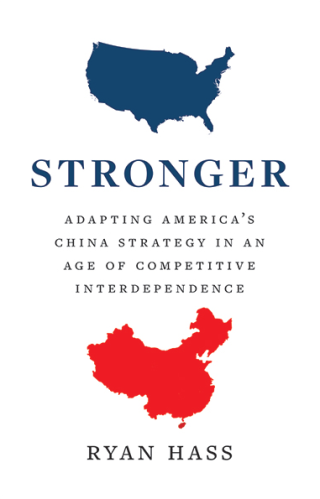

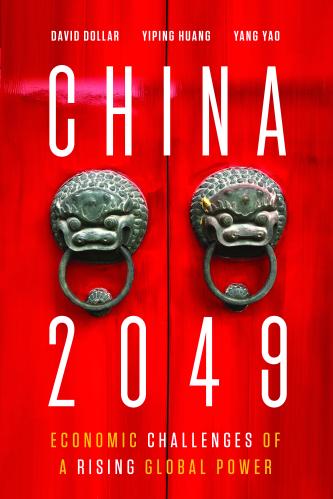
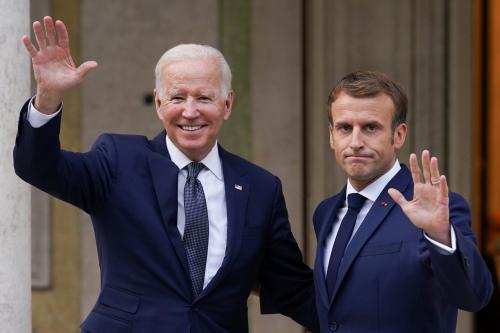
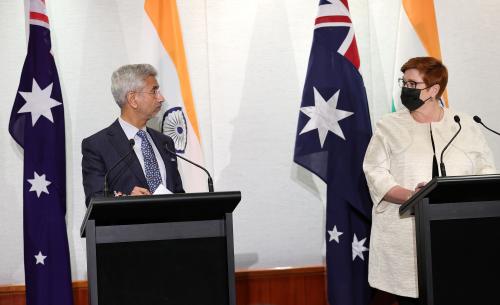
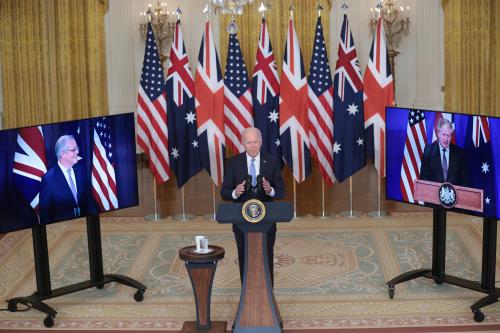











Commentary
Around the halls: AUKUS defines an emerging alliance at sea
March 15, 2023